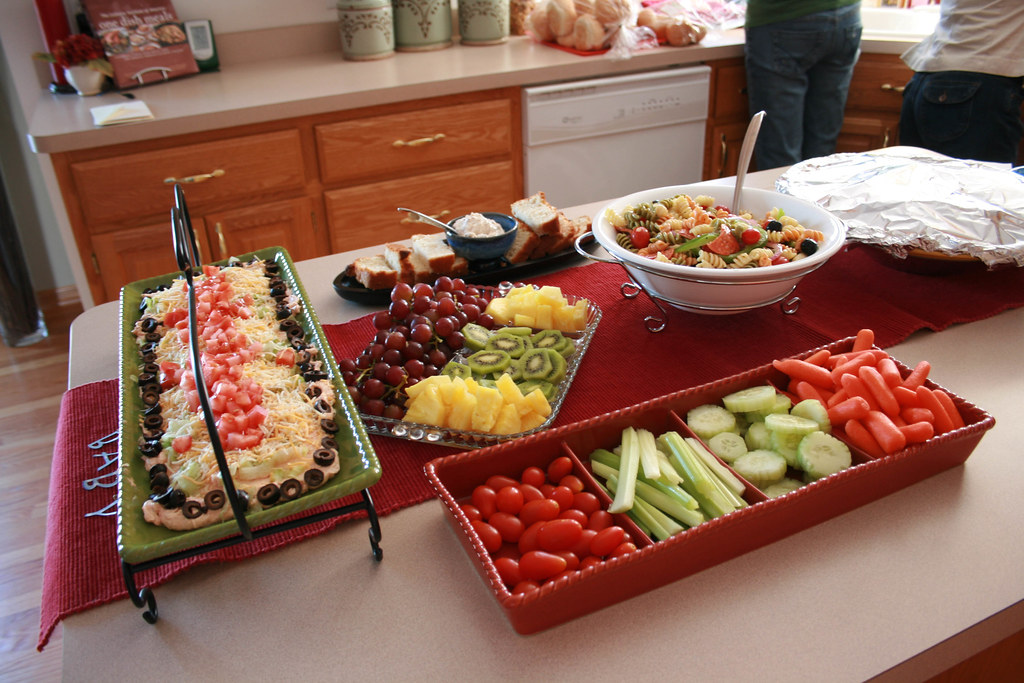
The culinary world is a living, breathing entity, constantly evolving and surprising us with new tastes, techniques, and philosophies. As we gaze forward into 2025, the landscape of food trends promises to be more dynamic and diverse than ever, reflecting shifts in consumer desires, cultural influences, and even our collective experiences. It’s a thrilling prospect for home cooks, seasoned chefs, and food enthusiasts alike, offering an abundance of tempting tastes and intriguing elements just waiting to be explored.
This year, we’re witnessing a fascinating blend of culinary leanings. On one hand, there’s a clear pull towards maximalist dishes and bold, loud flavors, pushing us to experiment with vibrant combinations and draw inspiration from every corner of the globe. On the other, a quieter, more local emphasis is emerging, inviting us to appreciate simpler pleasures and lean into clean, stripped-back flavors that celebrate the essence of ingredients without fuss.
Get ready to sink your teeth into what promises to be a truly fun, foodie year! We’re about to embark on a captivating journey through some of the most exciting emerging food trends for 2025, diving deep into how they’re shaping our plates and palates. From the vibrant, sun-drenched notes of island flavors to the captivating spectacle of hibachi, and the intriguing nuances of yuzu fruit, Asian sweets, and Korean barbecue, prepare to discover what’s hot and how you can bring these delicious movements into your own kitchen.
1. **Island Flavors**
Imagine a splash of tropical sunshine gracing your plate, infusing your eating habits with much-needed joy! This year, one of the most exciting food trends for 2025 is the delightful fusion of traditional and island ingredients. It’s all about bringing that vacation vibe right to your dining table, transforming everyday meals into extraordinary, unique experiences.
We’re seeing a rise in popular picks like the juicy sweetness of pineapple and the tangy burst of passionfruit, but the adventure doesn’t stop there. More adventurous options are also making waves, such as the rich, aromatic depth of coconut curry, the vibrant kick of Caribbean spices, and the intriguing tartness of yuzu fruit, which we’ll explore even further shortly. Beverages are also joining this tropical escape, with flavors taking a delightful turn toward the floral and fruity, promising a refreshing paradise in every sip.
For those eager to dive into this trend, the possibilities are endless. You could learn to craft a three-course Hawaiian-inspired menu, blending traditional island flavors with mainland favorites, or prepare a stunning four-course menu of classic Hawaiian dishes for a truly tropical experience. And don’t forget the cocktails! Mixing up tropical drinks like a passion fruit and rum hurricane, a sophisticated lychee martini, or a tangy passion fruit mojito can perfectly complement any island-inspired meal, extending that blissful escape.
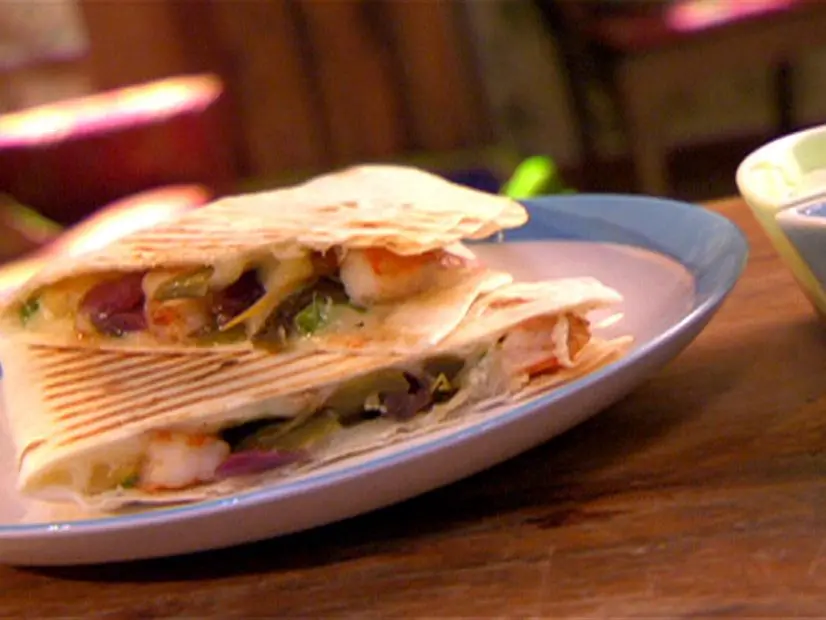
Island Quesadillas with Lime Sour Cream and Pureed Mango Dip
Ingredients
Equipment
Method
- Preheat oven to 400 degrees F.
- Heat a stove-top grill pan or griddle to medium-high heat and coat with cooking spray. Season shrimp all over with salt, black pepper and cumin. Place shrimp on the hot pan and cook 2 minutes per side, until bright pink and cooked through. Place pineapple on grill next to shrimp and cook 2 minutes per side, until golden brown. Remove shrimp and pineapple from grill and cut both into 1-inch chunks.
- Arrange 4 tortillas on a flat surface. Top with, shrimp, pineapple, cheese, red peppers, and scallions. Place second tortilla on top. Transfer with hands or with a spatula, to a baking sheet. Place a second baking sheet on top to weigh down the tortillas. Bake for 10 minutes, or until cheese is melted and tortillas are golden brown.
- While the quesadillas are baking, in a small bowl, using a spoon, combine sour cream, lime zest and garlic. Mix well to combine.
- In a food processor, combine mango and lime juice. Puree until smooth and remove from food processor and place in a bowl. Using a rubber spatula, stir in cilantro.
- Remove quesadillas from the oven. Cut quesadillas into wedges and serve with lime sour cream and pureed mango on the side.
Notes

2. **Hibachi**
Hibachi dining is set to continue its delicious ascent in 2025, solidifying its place as one of the year’s most exciting food trends. It’s more than just a meal; it’s a captivating blend of cuisine and theater that offers maximalists the chance to enjoy both dinner and a thrilling performance in the same setting. From simple, communal moments around an Asian grill to the exhilarating spectacle of a teppanyaki chef artfully spinning samples through the air, hibachi brings an unparalleled level of engagement to the dining experience.
A modern and incredibly convenient twist on this classic food trend that will continue to grow in 2025 is the introduction of hibachi food trucks to neighborhood locales. These talented cooks are taking their show on the road, serving up delicious and convenient hibachi food with all the flavor and quality you’d expect from a traditional sit-down eatery. This innovative approach makes authentic hibachi more accessible than ever, allowing more people to enjoy its unique charm.
For curious eaters looking to incorporate this joyful culinary format into their next event, hibachi catering is also a fantastic option. It recreates the restaurant experience in a venue of your choice, bringing the freshness and community vibe of hibachi even more up close and personal. Whether you’re planning a family get-together, seeking an out-of-the-box anniversary date idea, or anything in between, a one-of-a-kind culinary event led by an expert in the hibachi world is sure to impress and create lasting memories.
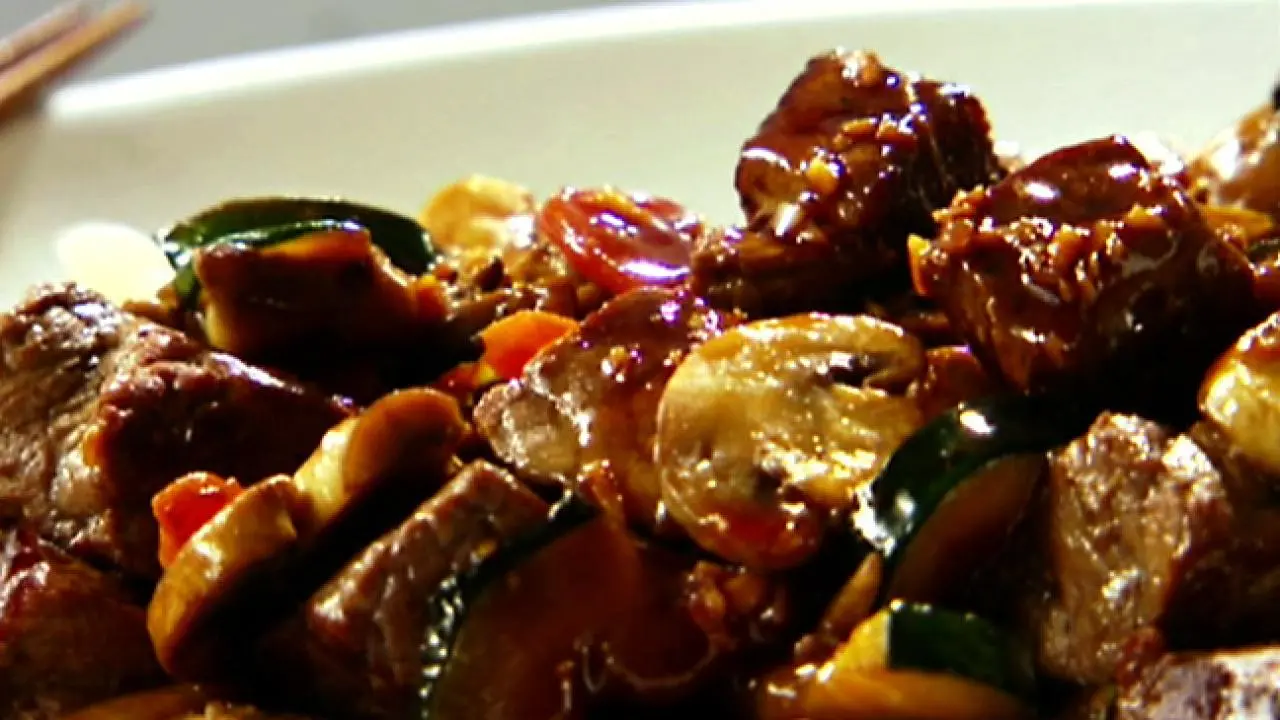
Hibachi Steak
Ingredients
Equipment
Method
- Put a large skillet over medium-high heat and add half of the oil. When the oil is hot, add the vegetables and stir-fry until the vegetables are almost done, about 5 minutes. While the vegetables are cooking, heat a second skillet over high heat and add the remaining oil.
- Cut the steak into small cubes, and stir-fry until browned on all sides, about 4 to 5 minutes.
- Bring a large pot of salted water to a boil over medium heat. Separate the egg roll wrappers into 2 piles. Roll each pile up into a log. Slice the log into thin strips about 1/4-inch thick and separate them into individual noodles. Put half of the noodles into the boiling water and cook for 3 minutes. Drain and add to a serving bowl or platter. (Reserve the remaining noodles for the Online Round 2 Recipe, Japanese Noodle Bowl.)
- In a small bowl combine the soy sauce, vinegar, garlic, and cornstarch and set aside.
- Add the steak, along with any accumulated juices, to the pan with the vegetables. Stir the cornstarch mixture into the vegetables and cook until the sauce has thickened, about 2 to 3 minutes. Stir in the butter. (Reserve 2 cups for the Online Round 2 Recipe, Japanese Noodle Bowl).
- Top the cooked noodles with the steak and vegetable mixture and serve.
Notes

3. **Yuzu Fruit**
Prepare to meet the next prominent superfood as the new food trends of 2025 roll out: yuzu fruit. This small, pebble-skinned citrus fruit is not only visually intriguing but also packs a powerful nutritional punch. According to Healthline, yuzu helps reduce inflammation and promotes heart health, delivering a potent one-two combination of antioxidants and vitamins for its size, much like a mandarin orange.
Its distinctive taste profile, notably more sour than a typical lemon or lime, makes it an incredibly versatile ingredient. Yuzu can effortlessly replace these common citrus fruits, providing a tangy kick that elevates a wide variety of recipes, from refreshing salads to decadent desserts. Beyond its whole form, you’ll find this power fruit readily available in juices and jams, making it easier than ever to incorporate its unique flavor into your culinary creations.
The growing availability of yuzu in grocery store produce sections signifies its increasing prominence. As consumers seek out ingredients that offer both exceptional flavor and tangible health benefits, yuzu is perfectly positioned to become a staple in health-conscious kitchens worldwide. Its ability to add a vibrant, unique sour note makes it an indispensable addition for anyone looking to experiment with bold new flavors while boosting their well-being.

White chocolate and yuzu lava cake
Ingredients
Equipment
Method
- Preheat your oven to 200°C (400°F). Generously butter and flour six ramekins, tapping out any excess flour.
- Melt the white chocolate and 110 grams of dairy butter together in a medium saucepan over low heat or using a double boiler, stirring until smooth. Remove from heat.
- In a large mixing bowl, whisk the eggs and 80 grams of sugar until the mixture is light, fluffy, and pale yellow.
- Slowly pour the melted chocolate and butter mixture into the egg and sugar mixture, whisking continuously until well combined.
- Gently fold in the all-purpose flour using a rubber spatula until just incorporated, being careful not to overmix.
- Stir in the yuzu juice, ensuring it is evenly distributed throughout the batter.
- Divide the batter evenly among the prepared ramekins.
- Place the ramekins on a baking sheet and bake for 10-14 minutes, or until the edges are set but the center remains slightly jiggly.
- Carefully remove the ramekins from the oven and let them cool for 1-2 minutes.
- Invert each lava cake onto a serving plate and serve immediately, optionally garnished with a dusting of powdered sugar or fresh berries.
Notes
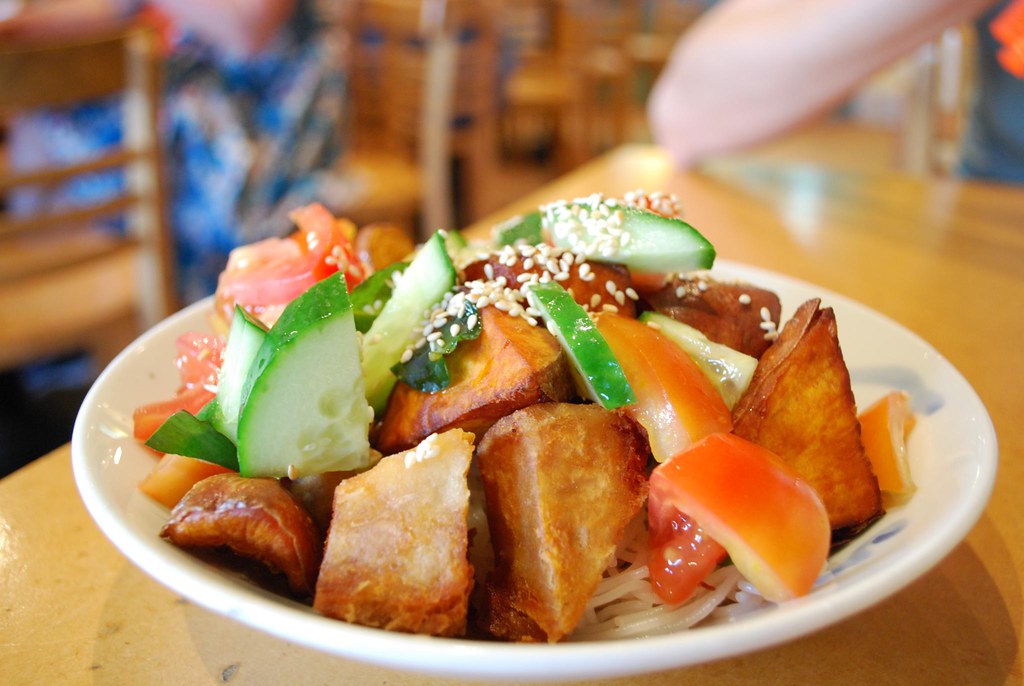
4. **Asian Sweets**
Thanks to the incredible global reach of the internet, Asian candies and sweet treats have burst onto the scene, gaining immense popularity even among those who have never had the chance to visit the continent. What began as a major food trend in 2024 is now predicted to continue its sweet reign through 2025, captivating palates with its diverse and delightful offerings.
The past year saw domestic viral treats like peelable mango and banana gummy candies from Walgreen’s Nice! capture widespread attention, successfully introducing Korean foods into the mainstream for many American retailers. This phenomenon effectively paved the way for the continuation of this exciting sweet trend into 2025. But it’s not just candies; viral exposure on platforms like TikTok for delights such as Hwachae, a refreshing Korean fruit punch, and tanghulu, which are fresh fruits encased in a transparent sugar shell, has forged a significant cultural bridge that shows no signs of slowing down.
The accessibility of these treats has never been easier, with neighborhood Asian markets and convenient online listings on platforms like Amazon making it a simple task to find a wide selection of Asian-inspired goodies to sample. Moreover, crossover creations are popping up everywhere, from mochi donuts that combine a beloved Japanese treat with a classic American one, to desserts featuring intriguing flavors like matcha and yuzu, which are showing up in restaurants and bakeries across the country. The coming year truly promises to be an era of sweet discovery, inviting everyone to explore the rich and varied world of Asian sweets.

Asian Sweet Potato Salad with Cucumbers, Dates and Arugula
Ingredients
Equipment
Method
- Begin by peeling and dicing sweet potatoes. Bring a large pot of salted water to a boil over high heat. Add the potatoes, reduce heat and cook until just tender but still have a little bite. Drain and place in a bowl to cool.
- Combine the dressing ingredients in a blender and puree until smooth. Season with salt and pepper. Once potatoes are cool toss with dressing and set aside on salad platter.
Notes

5. **Korean Barbecue and Beyond**
Get ready for barbecue food trends in 2025 to take an exciting leap, borrowing the very best bits from a diverse range of Asian cuisines. We’re moving beyond traditional domestic barbecue options, as the magic of flavors from Thai, Chinese, and especially Korean BBQ – often referred to collectively as Asian grills – begins to infuse and elevate our usual grilling sensibilities in the coming year.
Expect a significant rise in the popularity of regional spice profiles from Asia, characterized by their smoky, fragrant, and peppery notes. Remember the Chinese BBQ obsession of 2023, when the small town of Zibo in China became a TikTok sensation for its enviable barbecuing culture? Well, brace yourselves for an uptick in Korean and Thai barbecue techniques in 2025, poised to add some truly exciting Asian flavors to your next cookout.
To tap into this delicious trend, consider adding the spicy, salty, and sweet Korean gochujang paste to your meat as an earthy marinade, lending a profound depth of flavor. Or, explore the Thai technique of braising chicken wings in a punchy broth overnight before drying them off and getting some incredible smoke through them on the barbecue. For those living in barbecue havens, local chefs can even help you sort out fusion flavors, expertly blending classic American barbecue with an international flare, offering classes that teach you how to master these innovative techniques and elevate your grilling game.
Continuing our culinary exploration, we now delve into the evolving landscape of taste and sustainability, highlighting the fiery ascent of peppers and hot flavors, the refined resurgence of sake, the nourishing practice of eating with the seasons, the innovative growth of urban farm produce, and the indulgent delight of butter boards. These trends reflect a deeper consciousness about our food sources, a desire for both bold experiences and mindful consumption, and an embrace of culinary creativity.
Product on Amazon: Korean BBQ: Master Your Grill in Seven Sauces [A Cookbook]
Price: 17.79 USD
Rating: 4.7 Total reviews: 738
Top Review from US: “This tiny cookbook is packed with delicious sauces that will have you eating bbq on a consistent basis.”
Shopping on Amazon >>

Gyeran Mari (Korean Rolled Omelet)
Ingredients
Equipment
Method
- In a medium bowl, whisk together the large eggs with kosher salt and freshly ground black pepper until thoroughly combined. Stir in the minced carrot, onion, and scallion, ensuring vegetables are finely minced.
- Heat a non-stick skillet (about 8-10 inches) over low to medium-low heat. Add the neutral oil and swirl to coat the bottom evenly.
- Pour about a quarter to a third of the egg mixture into the hot skillet, tilting the pan to create a thin, even layer that covers the entire bottom.
- Cook the egg layer until it is mostly set but still slightly wet on top; this flexibility is key for rolling without tearing.
- Using a heatproof spatula, gently fold or roll about a third of the omelet from one end towards the center of the pan.
- Continue to roll the omelet another third of the way, creating a neat, compact roll at one end of the skillet.
- Push the rolled omelet to one side of the skillet. If necessary, lightly re-grease the empty part of the pan with a tiny bit more oil. Pour another portion of the egg mixture next to the rolled omelet, allowing it to slightly run underneath the cooked portion.
- Let this new layer cook until mostly set, then gently roll the already cooked omelet over the new layer, continuing the rolling process. Repeat this step until all the egg mixture is used, forming a thick, multi-layered roll.
- Once all egg is rolled, cook the Gyeran Mari for another minute or two, gently pressing down with the spatula, to ensure it is cooked through and lightly golden on all sides.
- Carefully transfer the rolled omelet to a cutting board. Let it rest for a minute, then slice into 1-inch thick pieces and serve warm.
Notes
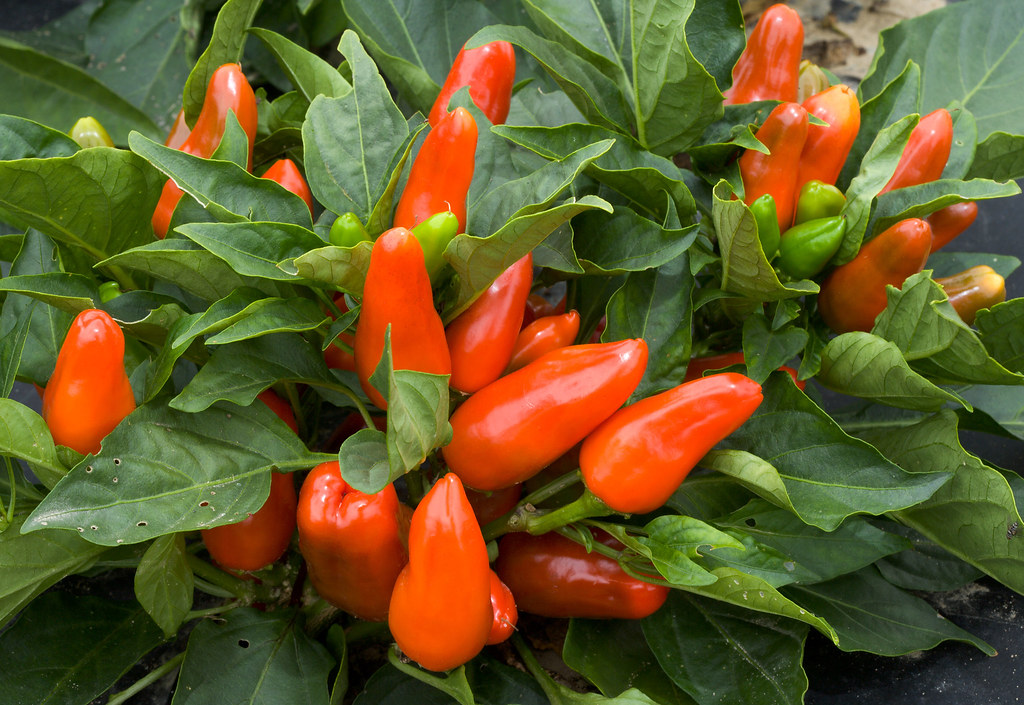
6. **Peppers and Hot Flavors**
Get ready for things to sizzle and spice up in 2025, as peppers of all shapes, sizes, and heat profiles take center stage. This isn’t just about a gentle warmth; the world of spicy foods is reaching exhilarating new heights, pushing the boundaries of both heat and flavor. While the “swicy” trend (sweet and spicy) has been a recent favorite, the focus now is decidedly on turning up the Scoville scale, incorporating ultra-hot ingredients such as ghost peppers, habaneros, and Calabrian chiles. Even more exotic varieties like the Caribbean’s Habanero and Thailand’s prik kee nu chile will be making prominent appearances, inspiring a global exploration of heat.
This fiery ascent is fueled by a collective desire for bold, truly memorable eating experiences and is heavily influenced by the viral social media challenges that playfully test consumers’ heat tolerance. Expect to see an exciting array of tongue-tingling products hitting the market, from intensely spicy sauces that awaken your senses to snacks that pack an undeniable punch. This trend isn’t merely about the raw heat; it’s an artful exploration of complex flavor layers, where potent spice is meticulously balanced with surprising notes of sweetness, tanginess, or rich umami, creating a multifaceted sensory adventure.
The reach of this spice revolution extends far beyond just chips and popcorn, permeating various culinary categories. You’ll find audacious chile versions of comforting mac and cheese, intriguing spicy peanut butter, surprisingly zesty cinnamon rolls, and even trending cocktails like the Picante, all designed to deliver that thrilling kick. Moreover, the trend encourages an embrace of diverse global cuisines, inviting us to sample traditional chile dishes such as the rich and complex Malaysian laksa, or the vibrant and unique blackened pineapple chow from Trinidad and Tobago. This widespread integration means that whether you’re dining out at a fast-food outlet, grabbing a bite from a food truck, or experimenting in your home kitchen, spiced-up versions of beloved offerings will be readily available for your adventurous palate.
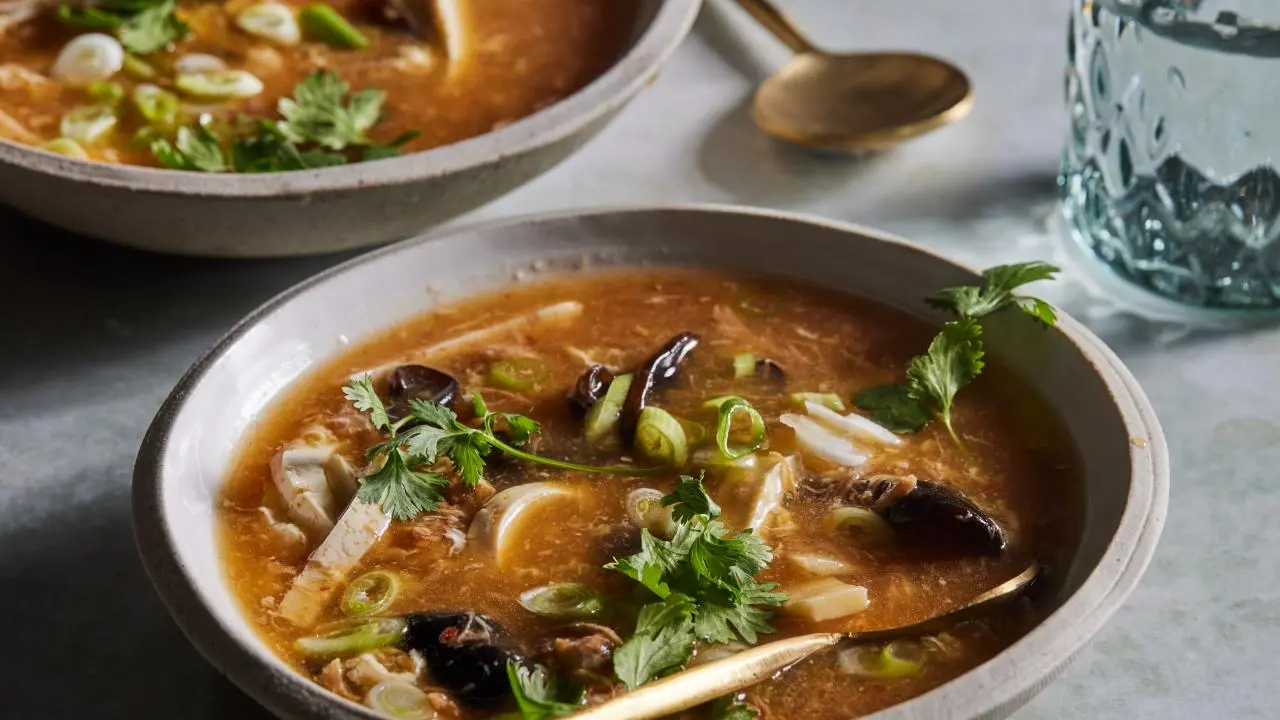
Hot and Sour Soup
Ingredients
Equipment
Method
- Put the wood ears in a small bowl and cover with boiling water. Let stand for 30 minutes to reconstitute. Drain and rinse the wood ears; discard any hard clusters in the centers.
- Heat the oil in a wok or large pot over medium-high flame. Add the ginger, chili paste, wood ears, bamboo shoots, and pork; cook and stir for 1 minute to infuse the flavor. Combine the soy sauce, vinegar, salt, pepper, and sugar in a small bowl, pour it into the wok and toss everything together - it should smell really fragrant. Pour in the Chinese Chicken Stock, bring the soup to a boil, and simmer for 10 minutes. Add the tofu and cook for 3 minutes.
- Dissolve the cornstarch in the water and stir until smooth. Mix the slurry into the soup and continue to simmer until the soup thickens. Remove the soup from the heat and stir in 1 direction to get a current going, then stop stirring. Slowly pour in the beaten eggs in a steady stream and watch it spin around and feather in the broth (it should be cooked almost immediately.) Garnish the hot and sour soup with chopped green onions and cilantro before serving.
Notes

7. **Sake**
For spirit enthusiasts, 2025 promises a delightful new frontier with the continued and significant increase in the presence of sake, Japan’s revered rice wine, across the food and drink landscape. This elegant beverage is steadily solidifying its place, with a growing array of sake options now available in a broader range of bars, restaurants, and liquor stores than ever before. Beyond simple pours, we’re also seeing the exciting introduction of sake-based cocktails, adding a refined, innovative twist to mixology, and sophisticated sake tasting events in higher-end establishments, inviting deeper appreciation for its nuanced profiles.
The evolution of sake consumption extends beyond traditional swigs, embracing modern spins that appeal to a wider audience of beverage lovers. Look for refreshing sparkling sake, which offers a effervescent lightness, and a fascinating variety of flavored variations that introduce new dimensions to this classic drink, making it more approachable and versatile. This global embrace is clearly reflected in the market data; the Japanese sake market is impressively projected to grow at a compound annual growth rate of 4.8% each year from 2024 through 2032, ultimately amounting to an estimated market worth of 1.67 billion USD by 2031.
This significant growth trajectory for sake began its upward climb around 2022, when approximately nine million liters of sake were imported into the U.S., signaling a clear and escalating demand. The trend’s global reach is further underscored by the fact that around two million liters were imported to the U.K. in 2023 alone, demonstrating a widespread international appreciation for this Japanese delicacy. It’s also worth noting that sake isn’t the only Japanese beverage making waves; the Japanese whiskey market is also set to continue its expansion, with an estimated growth of USD 614.15 million between 2022 and 2027, ensuring a superb selection of Japanese spirits for discerning palates. For those eager to dive into this trend, culinary applications such as serving exciting sake bombs or incorporating sake into savory dishes like flavorful sake salmon offer delicious entry points.

Sake Salmon and Rice
Ingredients
Equipment
Method
- In a freezer bag, combine the mustard or wasabi paste, Worcestershire sauce, soy, oil, and sake and add the salmon fillets. Leave to marinate for about 20 minutes.
- Follow packet instructions for the rice, or rice-cooker handbook or just put rice in a pan, bruise cardamom pods and chuck them in too, and put double the volume of water as you have rice. Bring to the boil, then turn down to the lowest you possibly can, clamp on a lid and leave until the rice has absorbed the water and is cooked, about 15 minutes.
- Heat a smooth griddle or nonstick skillet, and cook the salmon fillets for 1 1/2 minutes on 1 side then a minute on the other side. Remove the salmon, double wrapping each fillet in foil parcels and let them rest for 10 minutes on a wooden board or a pile of newspapers.
- Bring the sake to a boil in a tiny little saucepan, like one you might melt butter in, to let the alcohol taste evaporate. Take the pan off the heat and add the other sauce ingredients.
- Unwrap the salmon fillets, removing them to a wooden board for carving as you do so.
- Arrange some freshly boiled rice on 2 plates, and slice the salmon fillets into thin slices. Lay the carved salmon on top of the rice and spoon over the sauce, letting it gloss the fish and drip here and there over the rice. Scatter the cilantro on top.
Notes
2. Resting the salmon in foil parcels is crucial. This allows the residual heat to gently finish cooking the fish, ensuring it remains moist and flaky, preventing dry salmon.
3. When cooking rice, use cold water and avoid lifting the lid during the absorption phase to maintain consistent temperature and steam, leading to perfectly cooked, fluffy grains.
4. Boiling the sake for the sauce is important to evaporate the alcohol, leaving behind its nuanced flavor without the harshness. Taste and adjust the final sauce for balance.
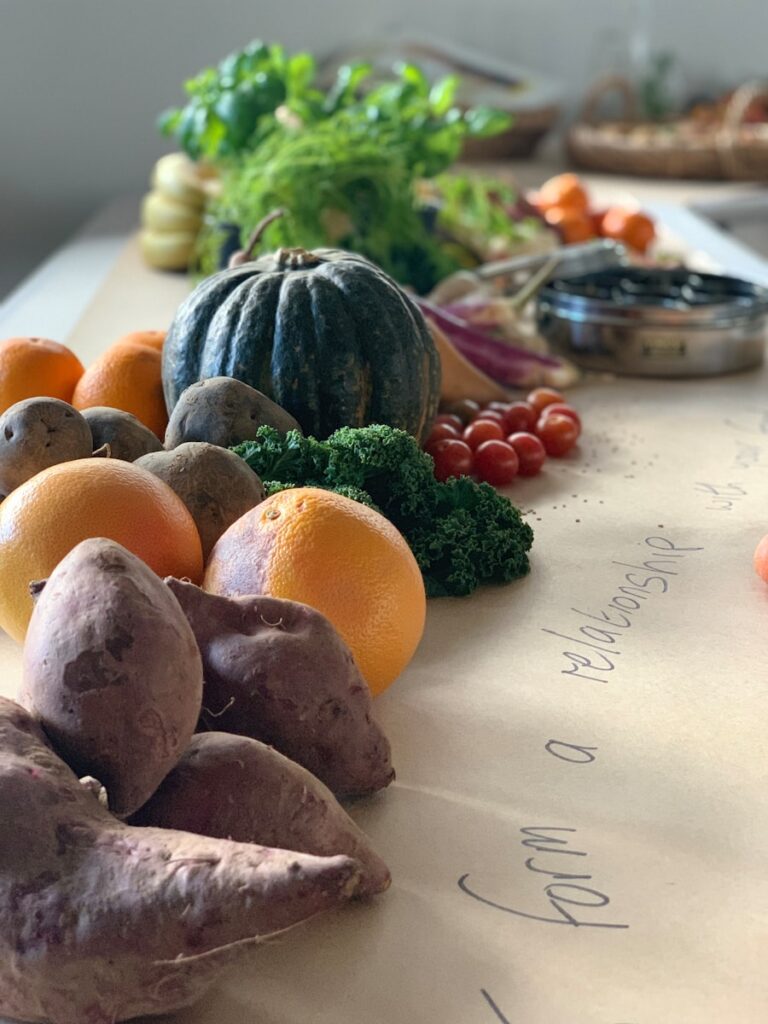
8. **Eating the Seasons**
The practice of eating with the seasons, long a hallmark of high-end restaurants where the “farm-to-table” philosophy dictates menu selections that change week by week, is now poised to become even more popular among individual consumers in 2025 and beyond. This nourishing approach prioritizes freshness and flavor by aligning our diets with nature’s cycles. The burgeoning popularity of local farmers markets, brimming with in-season goods, and the convenience of produce subscription boxes are making regional specialties, provided at their peak freshness and often grown under organic and planet-friendly conditions, more accessible to everyday households.
This movement is deeply rooted in a hyper-local philosophy, providing a wonderful communal aspect to eating. It celebrates and empowers nearby food providers, allowing them to truly shine in their element. By having direct access to food grown close by and delivered precisely when it’s in season, consumers benefit from a more direct line from grower to kitchen, significantly reducing the miles between harvest and household. This means fresher ingredients with enhanced flavor and nutritional value, minimizing environmental impact while supporting local economies.
Furthermore, this trend extends to a personal embrace of food cultivation. A significant move towards growing food at home, even if it’s just a small herb garden or a few vegetables on a balcony, and making the most of nearby “U-Pick” offerings, perfectly plays into this overall food trend. These practices not only provide ultra-fresh ingredients but also foster a deeper connection to our food sources and promote sustainable habits that benefit both our bodies and the planet.
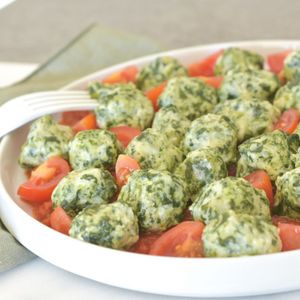
Eat the Season: The Gnudi from Tuscany
Ingredients
Equipment
Method
- Place the fresh ricotta in a fine-mesh sieve lined with cheesecloth and let it drain in the refrigerator for at least 30 minutes, or ideally, several hours to remove excess moisture.
- Wilt the fresh leaf spinach in a hot pan or microwave, then cool it slightly. Squeeze out all excess water thoroughly using your hands or a clean kitchen towel, then finely chop the spinach.
- In a large mixing bowl, combine the drained ricotta, finely chopped spinach, 1 egg, and 100 grams of grated Parmesan cheese. Mix gently until just combined; avoid overmixing.
- Lightly flour your hands and a clean work surface. Carefully scoop small portions of the mixture and gently roll them into oval or round gnudi, approximately 1-inch in size.
- Bring a large pot of generously salted water to a gentle simmer over medium heat. The water should be simmering, not boiling vigorously, to prevent the gnudi from breaking apart.
- Carefully drop the formed gnudi into the simmering water in batches, being careful not to overcrowd the pot. Cook for 3 to 5 minutes, or until they float to the surface and appear plump and set.
- While the gnudi are cooking, melt the 50 grams of butter in a large skillet over medium heat. Cook the butter until it turns a deep golden brown and develops a nutty aroma (beurre noisette).
- Add the 4 sage leaves to the browned butter and cook for about 30 seconds until fragrant.
- Using a slotted spoon, carefully transfer the cooked gnudi directly from the simmering water into the skillet with the sage butter. Gently toss the gnudi to coat them evenly in the sauce.
- Serve the gnudi immediately, garnished with extra grated Parmesan cheese.
Notes

9. **Urban Farm Produce**
Addressing the critical issue of urban food deserts, the innovative growth of ultra-urban farm produce is set to be a transformative food trend in 2025, bringing much-needed fresh foods to communities where access to healthy options has historically been limited. This forward-thinking approach reimagines cityscapes as fertile ground, transforming neglected spaces into vibrant sources of nourishment and community empowerment. It’s about cultivating fresh, high-quality ingredients right where they’re needed the most, closing gaps in food access and promoting public health.
The world of novel growing methods supporting this food trend is vast and inspiring, showcasing incredible ingenuity. Options range from the development of thriving local community gardens, where residents can collaboratively grow and share produce, to the cultivation of compact kitchen crops suitable for even the smallest apartments. Moreover, home-based hydroponics systems are making fresh, soil-free cultivation accessible on everything from rooftops and backyards to small balconies, demonstrating that delicious, healthy food can be grown virtually anywhere with determination and smart design.
Every single one of these urban farming initiatives, regardless of scale, provides critical access to healthy ingredients that are grown in responsible ways, often utilizing sustainable practices that conserve water and minimize waste. Beyond simply providing food, urban farms foster community engagement, educate residents about food systems, and create a more resilient and equitable food landscape, proving that fresh, delicious produce can be a reality for everyone, everywhere.
Product on Amazon: Six Seasons: A New Way with Vegetables
Price: 22.49 USD
Rating: 4.8 Total reviews: 3041
Top Review from US: “As an avid home cook and vegetable enthusiast, I recently delved into the culinary world presented in “Six Seasons: A New Way with Vegetables,” and it has completely changed the way I approach cooking and savoring vegetables.This cookbook, written by Joshua McFadden, takes a refreshing and innovative approach to vegetable-centric cooking, divided into the six distinct seasons of the produce calendar. Each season celebrates the bounty of vegetables available during that time, inspiring me to embrace the seasonal variations and experiment with new flavors and ingredients.One of the book’s strengths lies in its thoughtful organization and informative content. The author’s deep understanding of vegetables shines through, as he shares insights into the unique characteristics of each vegetable and the best ways to highlight their flavors. From root vegetables in winter to tender greens in spring, the recipes are tailored to make the most of the seasonal offerings.I appreciate the simplicity… …”
Shopping on Amazon >>

Isabella's Citrus and Beet Salad
Ingredients
Equipment
Method
- Preheat your oven to 400°F (200°C). Wash and trim the beets, then wrap each beet individually in aluminum foil.
- Place the wrapped beets on a baking sheet and roast for 60-90 minutes, or until they are tender when pierced with a fork. Let them cool slightly.
- While the beets are cooling, prepare the vinaigrette: In a small bowl, whisk together the fresh citrus juice, finely chopped shallot, extra-virgin olive oil, salt, and freshly ground pepper until well combined and emulsified.
- Once the beets are cool enough to handle, peel them (the skin should slip off easily). Slice or quarter the beets as desired for your salad.
- Supreme the tangelos or oranges: Using a sharp knife, carefully cut off the top and bottom of each fruit. Stand the fruit upright and slice downwards, following the curve of the fruit, to remove all the peel and white pith. Then, cut between the membranes to release individual citrus segments.
- In a large mixing bowl, gently combine the roasted beets and citrus segments. Pour the prepared vinaigrette over the beet and citrus mixture and toss gently to coat evenly.
- Add the arugula to the bowl with the dressed beets and citrus. Toss very gently to combine, ensuring the arugula is lightly coated but not bruised.
- Arrange the salad aesthetically on individual serving plates or a large platter.
- Generously crumble the feta cheese over the top of the salad for a salty and creamy finish.
- Serve immediately to enjoy the fresh flavors and contrasting textures.
Notes

10. **Butter Boards**
Butter is unequivocally having its grand moment in 2025, moving far beyond its traditional role as a mere spread and emerging as the star of a delightful new food trend: butter boards. These visually appealing and endlessly customizable creations are springing up with increasing frequency in shops and restaurants, captivating diners with their indulgent charm. The trend embraces an exciting variety of flavored butters, infused with everything from herbs and spices to sweet components, alongside those crafted from different kinds of dairy, such as rich and tangy goat butter, offering a nuanced spectrum of tastes.
Much like the beloved charcuterie board, the butter board transforms a simple ingredient into a communal, artistic, and utterly enjoyable experience. It’s an invitation to indulge in a shared delight, where a generous canvas of softened butter is beautifully adorned with an array of toppings—think flaky sea salt, honey drizzles, fresh herbs like rosemary and thyme, edible flowers, or even chili flakes for a touch of heat. The beauty lies in its versatility, allowing for endless creative expressions that cater to both sweet and savory palates, making it a perfect centerpiece for gatherings or a luxurious treat for a cozy night in.
This innovative presentation of butter speaks to a broader consumer desire for elevated home dining experiences and a playful approach to food. It’s an opportunity to experiment with textures and flavors, turning a humble dairy staple into a sophisticated and interactive dish. The butter board trend epitomizes a return to simple pleasures reimagined with a gourmet flair, inviting everyone to embrace the indulgent side of cooking and sharing, proving that sometimes, the most basic ingredients can lead to the most memorable culinary delights.

Butter Board with Cranberries and Pecans
Ingredients
Equipment
Method
- Allow the butter to come to room temperature for at least 15 minutes, then stir in a bowl to loosen it so that it’s spreadable. Layer it in swirls on a small serving board, slowly spreading it over the entire surface. Instead of trying to spread the entire stick of butter at once, I recommend scooping 1 tablespoon at a time with a rubber spatula or small spoon and spreading each tablespoon on its own. It’s faster to spread this way and allows you to create little wells inside the butter.
- Sprinkle the cranberries, pecans and thyme on top of the butter swirls. Drizzle the honey over the butter and garnish with the flaky sea salt. Serve immediately with warm bread.




